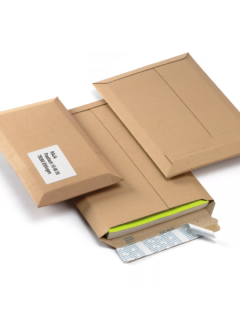The 4 principles of effective warehousing.
Adequate equipment of a warehouse does not guarantee its efficient operation. Equally important is proper management and application of the basic principles of goods storage.
In order for the warehousing process to be effective, 4 aspects need to be considered, i.e. storage technique, storage method, appropriate warehouse equipment and the introduction of the 5S principle.
Warehousing – what is it?
What is warehousing? It is a complex process of receiving, storing and preparing goods for transport or dispatch. Only by making this process work smoothly will you be able to achieve a satisfactory result and profit from your business. Warehousing consists of 4 stages:
- stage I: receiving the goods into the warehouse (unloading, checking the loads and documentation, sorting and entering in the records)
- stage II: storage of goods for a certain period of time (under optimum conditions)
- Stage III: picking ordering (collecting goods from the warehouse for further transport)
- stage IV: goods issue (release and transport to the collection point).
- Efficient warehousing is even crucial because of the need to remain competitive in the market and because of the need to reduce warehouse labour costs.
Storage logistics
In order for the warehousing process to be effective, it is first of all necessary to choose the right technique for storing goods and distributing them. Aspects such as:
- choosing the right arrangement of goods – it must be adapted to the type of goods
- excellent signposting throughout the warehouse – this makes work more efficient
- equipping the warehouse with the right equipment that makes work easier and more efficient
- recording incoming and outgoing loads
- respecting the plan, i.e. delivering goods on time
- observing health and safety rules and regulations
- training employees and ensuring they are qualified.
3 warehousing methods and the 5S principle
The 3 principles of warehousing and distribution of goods – ABC, LIFO and FIFO – are the most widespread and allow for efficient management.
Warehousing – the method ABC
The ABC method consists of segregating goods according to their rotation. Goods are placed according to categories: A – goods with the highest turnover – of the order of 80% (placed most at hand), B – goods that leave the warehouse less frequently (lower shelves of the racks) and C – goods that leave the warehouse least frequently (placed on the highest racks).
Warehousing – LIFO method
The LIFO method (Last In First Out) means that the goods that enter the warehouse last are placed closest to the packing area.
Warehousing – FIFO method
The FIFO method (First In First Out), on the other hand, means that the goods that came in first are placed closest to the packing area and will leave the warehouse faster than new goods. It is therefore the opposite of the LIFO method.
5S principle
The 5S principle (sorting, systematisation, cleaning, standardisation and self-discipline) is also used to improve warehouse operations. It is a Lean Manufacturing and Lean Management tool, which aims to organise the working environment correctly. Sorting means getting rid of unnecessary things in the warehouse, systematics means labelling goods appropriately, cleaning means regular tidying of the warehouse, standardisation means defining standards for the arrangement of goods, self-discipline means getting employees into the habit of applying the above principles.
Warehouse equipment
An important aspect of warehouse management is the appropriate
equipment. Every warehouse needs:
- sturdy and therefore preferably steel storage structures, i.e. racks, racks and hangers
- goods handling equipment – forklift trucks, hoists, cranes, cranes, etc,
- work areas, i.e. storage and work tables, special storage packaging
- packaging machines – paper, air and tape dispensers, film wrapping machines, bag closing machines, banding machines, stretch film and accessories for palletisation – hand film, packaging film, machine film, shrink film, pallets, protective angles and corners
- proper ventilation, air-conditioning and lighting system – for optimal storage and working conditions in the warehouse
- safety measures, such as fire extinguishers.
In addition to the warehouse equipment mentioned above, you also need
warehouseaccessories such as: knives, scissors, tape measures, scales, etc.
All the accessories and furniture without which storage is not possible can be found in the RAJA shop.














